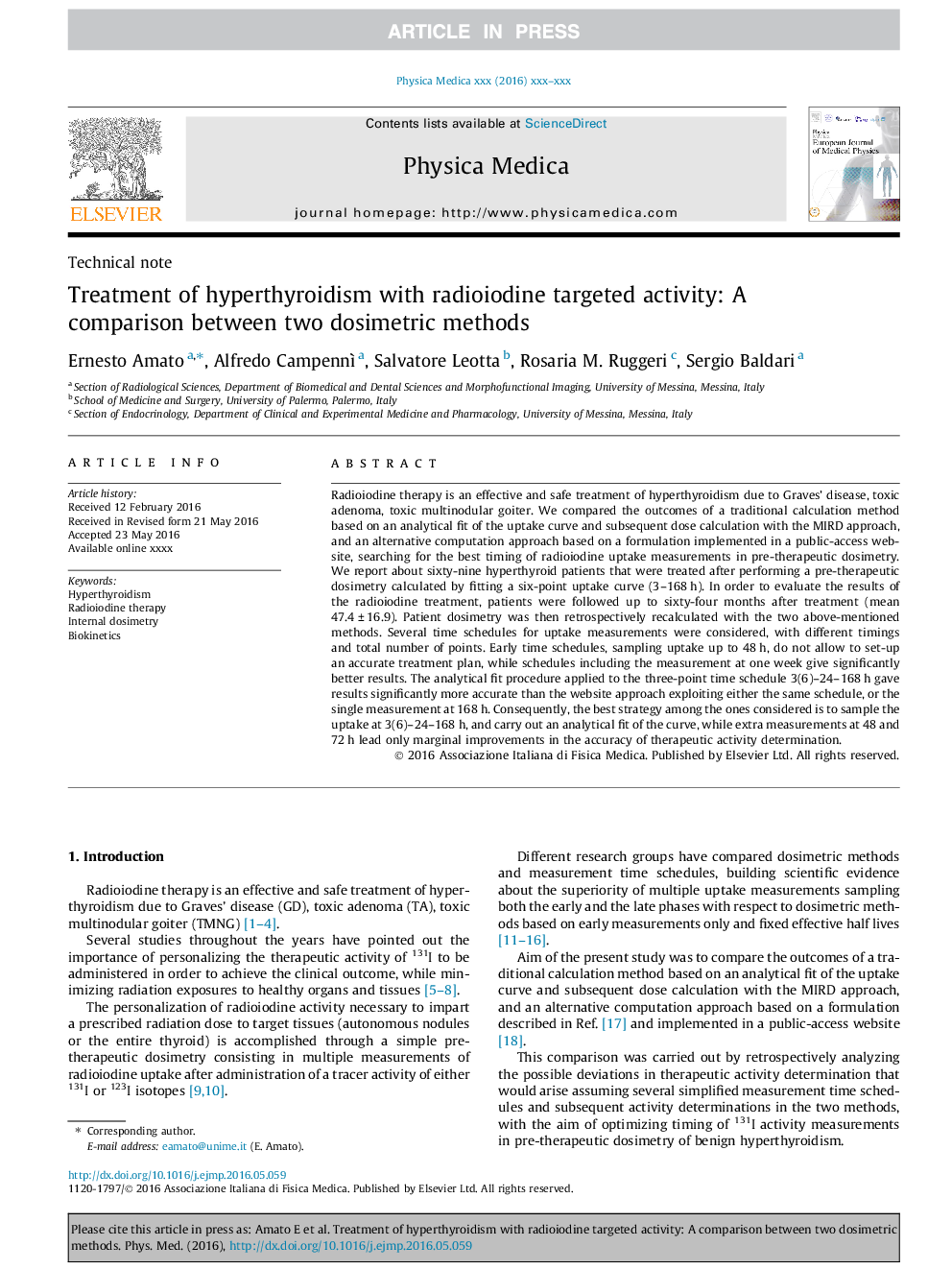| Article ID | Journal | Published Year | Pages | File Type |
|---|---|---|---|---|
| 10731349 | Physica Medica | 2016 | 7 Pages |
Abstract
Radioiodine therapy is an effective and safe treatment of hyperthyroidism due to Graves' disease, toxic adenoma, toxic multinodular goiter. We compared the outcomes of a traditional calculation method based on an analytical fit of the uptake curve and subsequent dose calculation with the MIRD approach, and an alternative computation approach based on a formulation implemented in a public-access website, searching for the best timing of radioiodine uptake measurements in pre-therapeutic dosimetry. We report about sixty-nine hyperthyroid patients that were treated after performing a pre-therapeutic dosimetry calculated by fitting a six-point uptake curve (3-168 h). In order to evaluate the results of the radioiodine treatment, patients were followed up to sixty-four months after treatment (mean 47.4 ± 16.9). Patient dosimetry was then retrospectively recalculated with the two above-mentioned methods. Several time schedules for uptake measurements were considered, with different timings and total number of points. Early time schedules, sampling uptake up to 48 h, do not allow to set-up an accurate treatment plan, while schedules including the measurement at one week give significantly better results. The analytical fit procedure applied to the three-point time schedule 3(6)-24-168 h gave results significantly more accurate than the website approach exploiting either the same schedule, or the single measurement at 168 h. Consequently, the best strategy among the ones considered is to sample the uptake at 3(6)-24-168 h, and carry out an analytical fit of the curve, while extra measurements at 48 and 72 h lead only marginal improvements in the accuracy of therapeutic activity determination.
Related Topics
Physical Sciences and Engineering
Physics and Astronomy
Radiation
Authors
Ernesto Amato, Alfredo Campennì, Salvatore Leotta, Rosaria M. Ruggeri, Sergio Baldari,
